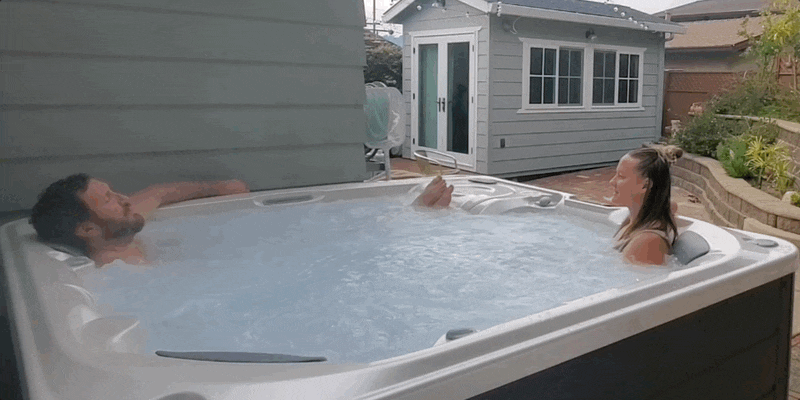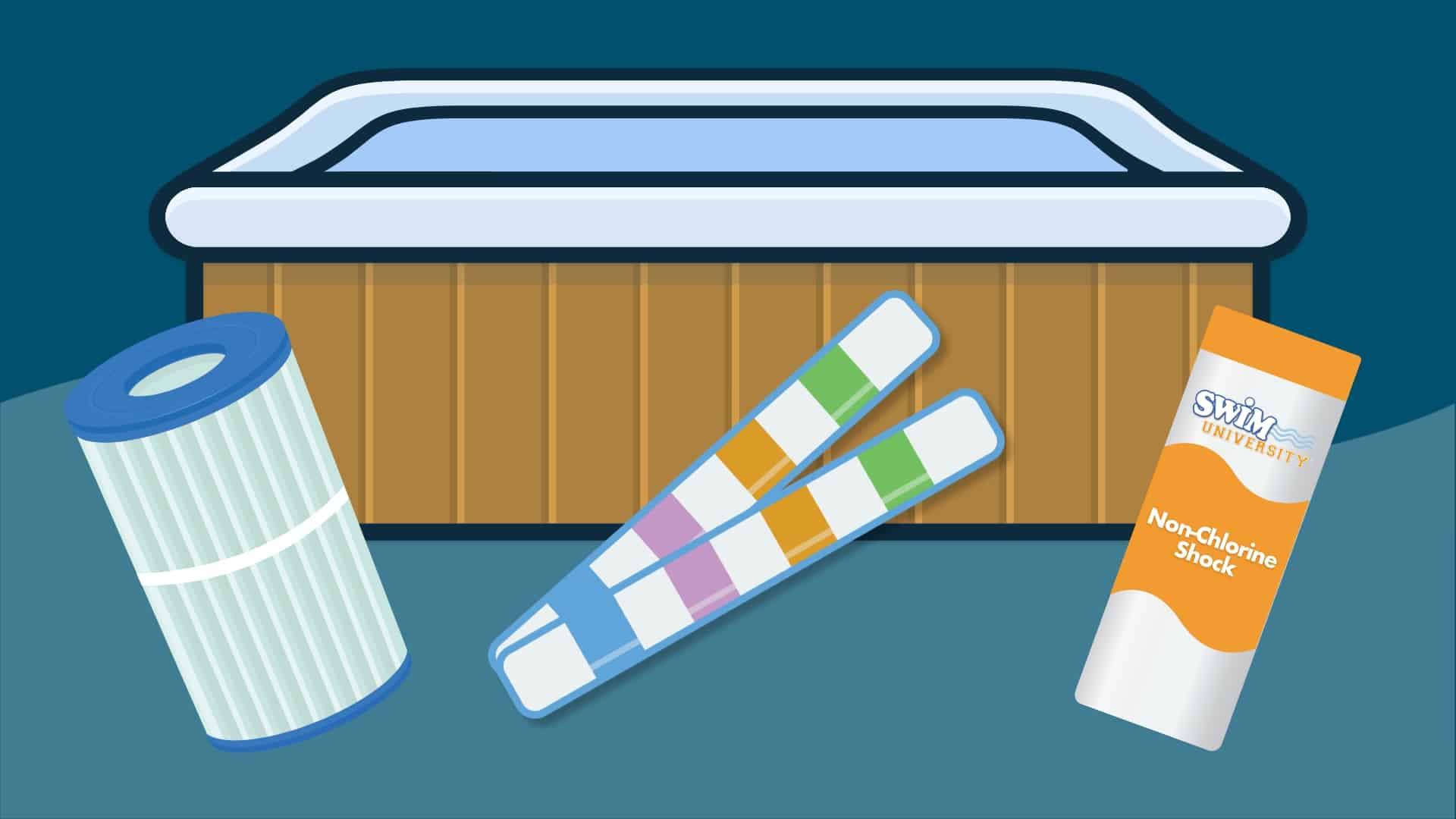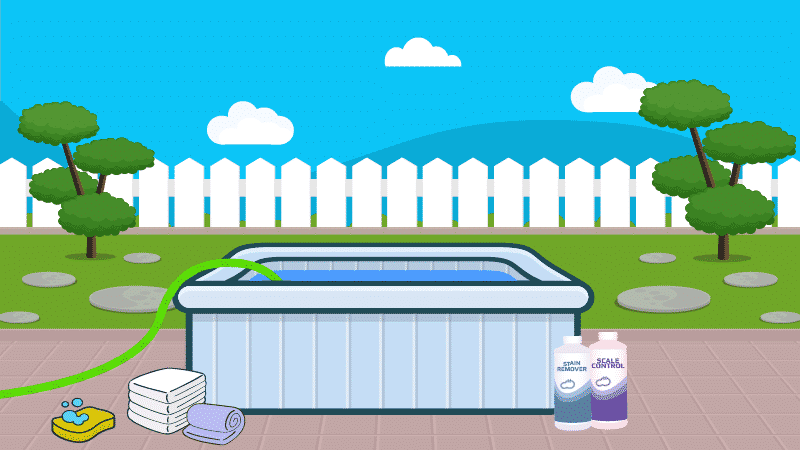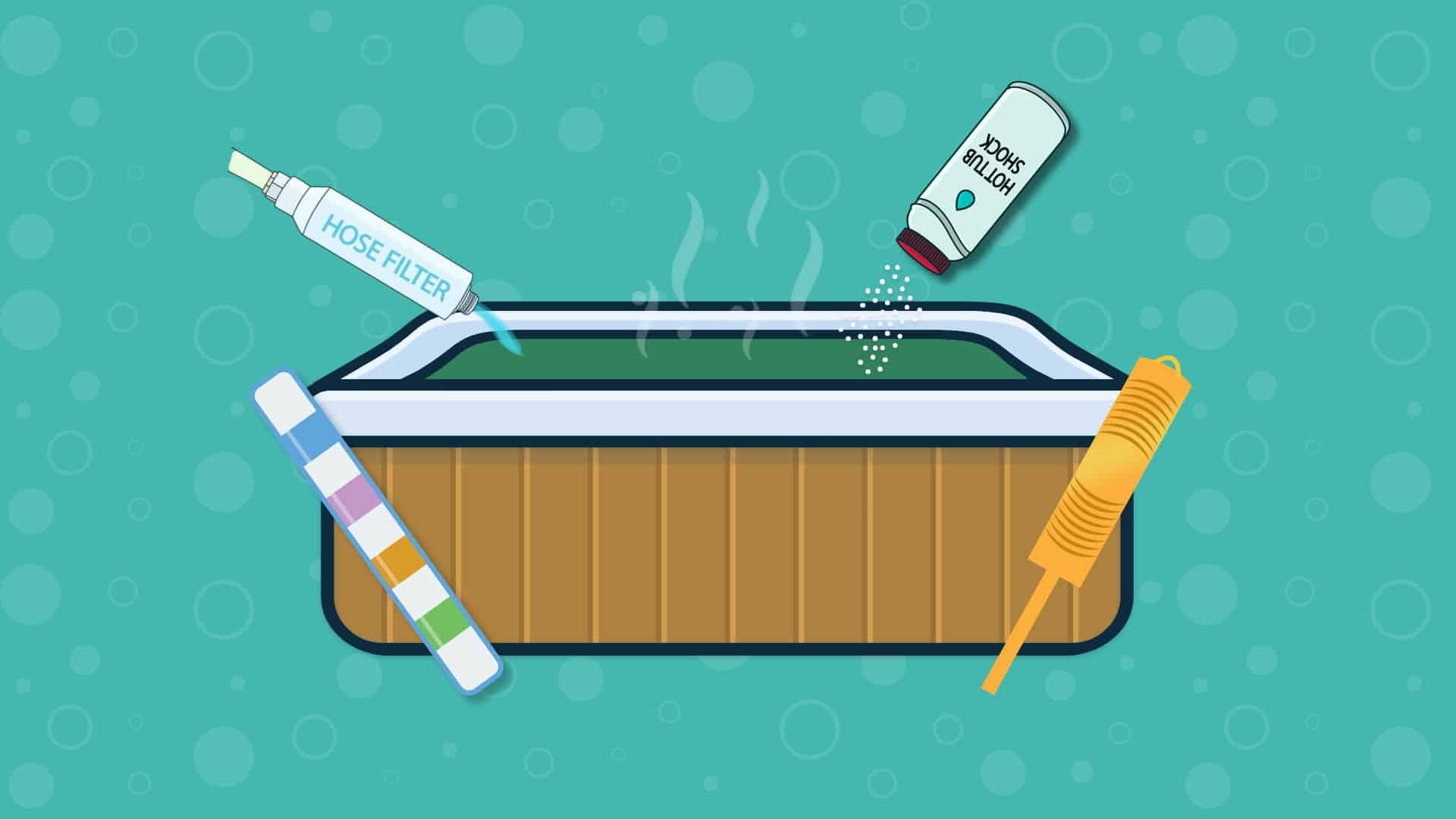Can You Put Epsom Salt in a Hot Tub?
Hot tubs and swim spas are built for relaxation. So, like a soothing hot bath, can you put Epsom salt in a hot tub?
NO! NEVER put Epsom salt (or bath salts) in a hot tub!
Epsom salt offers numerous health benefits. But it’s not compatible with your hot tub’s water chemistry and plumbing system.
In this article, I’ll dive into why Epsom salt and hot tubs don’t mix, explore the science behind Epsom salt’s effects on the body, and provide safe and effective alternatives for achieving similar benefits.
Important Note: I’m not a doctor. I’m simply a hot tub expert. When it comes to medical advice, talk to your doctor. I’m just here to tell you why you shouldn’t use Epsom salt in a hot tub. And provide suggestions on what’s safe to use instead.
What is Epsom Salt?
It was discovered in the town of Epsom in Surrey, England. The salt was found in a bitter, salty natural spring. It looks like flaky sea salt but is entirely different than table salt. When dissolved in warm water, it’s known for relieving muscle soreness. However, it’s also a strong electrolyte that is commonly found in beer. I know because I’m a homebrewer. When consumed, it can act as a laxative.
3 Reasons You Can’t Add Epsom Salt in a Hot Tub
Epsom salt (magnesium sulfate) adds sulfates to the water. And these ions cause a myriad of negative effects in your hot tub.
1. It Can Damage Your Hot Tub
Sulfates can corrode your gaskets, your heating element, and other metal parts in your hot tub. Over time, the magnesium and sulfate ions can corrode metal components, leading to leaks and equipment failure.
These ions also contribute to scale buildup (a hard, chalky deposit) that can damage the hot tub’s interior surfaces and plumbing. Last but not least, Epsom salt can also leave an oily residue that can damage the filter.
According to Jacuzzi (the hot tub brand)…
…salt levels exceeding more than 1500 ppm (parts per million) can cause corrosion to metal parts of a hot tub such as the heater or the pumps.
2. It Causes a Chemical Imbalance
Also, Epsom salt significantly alters the spa water chemistry. Hot tubs require a balance of pH and alkalinity levels to make your sanitizer (chlorine or bromine) more effective at killing bacteria.
It can make the water either too acidic or too alkaline, which will diminish the effectiveness of sanitizers and put you at risk of bacterial contamination. Also, the oily residue from dissolved Epsom salt can cause foam in your hot tub.
On top of that, adding 1-2 cups of Epsom salt to your hot tub (generally recommended amount for a bathtub) will increase the total dissolved solids (TDS) in the water. In layman’s terms, that just means there’s too much “crap” in your hot tub water. High TDS levels can also make your sanitizer (and other chemicals) ineffective. This is why I recommend draining and cleaning your hot tub every 3-4 months.
If you need more help with alkalinity, calcium, and pH balance, check out these articles:
- How to Raise pH (and Lower pH)
- How to Raise Alkalinity (and Lower Total Alkalinity)
- How to Adjust Calcium Hardness
3. It Can Void Your Warranty
Finally, using Epsom salt can also void your hot tub’s warranty. Most manufacturers specify the chemicals and additives that are safe to use. Avoiding these recommendations can lead to denied warranty claims.
I also read magnesium and chlorine (or bromine) can result in chemical reactions that can cause skin irritation. I had trouble verifying this claim. But that said, it’s still a reason to avoid putting Epsom salt in your hot tub.
Learn how to keep your hot tub clear while saving money so you can enjoy more soaking time without big costs. The Hot Tub Handbook covers every type of hot tub on earth.
3 Ways to Get the Same Benefits as Epsom Salt
Fortunately, there are hot tub-safe products and therapies that mimic the benefits of Epsom salt without the damaging effects.
1. Hot Tub-Safe Products
These products are specifically formulated for hot tub water chemistry and mechanics. They often contain minerals and compounds that offer relaxation and sore muscle relief, similar to Epsom salt. Here’s one I recommend…
This spa product is crafted from a natural blend of minerals, herbs, and botanicals, designed to leave skin feeling soft, supple, and radiantly healthy. The formula is spa-safe, oil-free, and proudly made in the USA.
2. Hydrotherapy
There are several natural remedies and practices you can adopt. Hydrotherapy, the use of water for pain relief and treatment, is a core benefit of hot tubs. The warm water and jet massage provide muscle relaxation and stress relief.

3. Aromatherapy Crystals
Hot tub aromatherapy crystals can be added to the water. They’re made from a natural elixir of minerals, herbs, and botanicals. They’re oil-free and safe to use in your spa. These crystals enhance relaxation and provide therapeutic benefits for some people.
Discover an amazing variety of water-soluble fragrances, each blended with skin-soothing natural extracts, in this collection of different scent pods.
But don’t add essential oils to your hot tub! Essential oils contain…oil (duh!). And those oils can gum up your filter and filtration system.
What If You Already Put Epsom Salt In Your Hot Tub?
Whoops! Don’t worry. All you have to do is drain and clean your hot tub. Here’s a simple step-by-step guide on removing Epsom salt from your hot tub.
1. Drain The Hot Tub
Begin by completely shutting off the power to your hot tub at the circuit breaker to ensure safety.
Locate the hot tub’s drain valve and attach a garden hose (or use a sump pump for faster draining). Make sure the other end of the hose is in an area where it’s safe to dispose of the water. Open the drain valve and allow the water to flow out. This process can take a while depending how many gallons of water your hot tub holds.
Once the hot tub is drained, close the drain valve and detach the garden hose. Use a wet/dry shop or hand pump to remove water from the bottom well.
2. Clean the Empty Hot Tub
Take out the filters and clean them thoroughly with a filter cleaner. If they are old or very dirty, consider replacing them.
Using a non-abrasive cleaner and a soft cloth or sponge, clean the interior surfaces of the hot tub. Pay special attention to jets and hard-to-reach areas. After cleaning, rinse the hot tub thoroughly with clean water to ensure no cleaning residue remains.
3. Refill the Hot Tub
To avoid air locks, place your garden hose in the filter well or where the filter was located. Turn on the hose and fill the hot tub to the recommended level, which is usually indicated on the hot tub.
Once the hot tub is filled, reinstall the cleaned or new filters. Then, restore power to the hot tub at the circuit breaker.
Add the necessary start-up chemicals (you can follow our guidelines here). After the chemicals have been circulated (run the jets for about 15-20 minutes), test the water with a test kit or test strips. Adjust the chemical levels as needed to achieve balanced water chemistry.
Turn on the heater and set the hot tub to your preferred temperature. Finally, make sure all jets, lights, and controls are functioning correctly before using the hot tub.
Frequently Asked Questions About Putting Epsom Salt in a Hot Tub
While pure Epsom salts might be beneficial for your body, they’re not suitable for your hot tub, swim spa, Jacuzzi, or inflatable hot tub. Also, here are some more common questions about Epsom salt I get asked about all the time.
What salts can you put in a hot tub?
Salts specifically formulated for hot tub use are safe to add. These include hot tub-specific salts that are designed to be gentle on the tub’s system and water chemistry.
What not to put in a hot tub?
Avoid adding oils, soaps, bath bombs, and bubble bath to a hot tub. These can cause foaming, create a biofilm that harbors bacteria, and damage the filtration system.
Can you put Epsom salt in a tub?
Yes, you can put Epsom salt in a regular bathtub. Epsom salt added to bath water is popular for relieving sore muscles. However, it’s important not to confuse a standard bathtub with a hot tub. Epsom salt is not suitable for hot tubs.
Is A Salt Water Hot Tub Better?
A saltwater hot tub can be better for some users. However, they can be more expensive initially and require a specific saltwater system to function correctly. Here’s our full article on salt water hot tubs.
3 Ways We Can Help With Your Hot Tub
- Hot Tub Cheat Sheets (Free): Easy-to-use guides to help you keep your hot tub water balanced and sanitized.
- The Hot Tub Handbook: An illustrated guide to DIY hot tub care, including water chemistry, maintenance, troubleshooting, and more.
- The Hot Tub Care Course. You’ll get step-by-step videos and a step-by-step downloadable guide with everything you need to know about hot tub maintenance.











